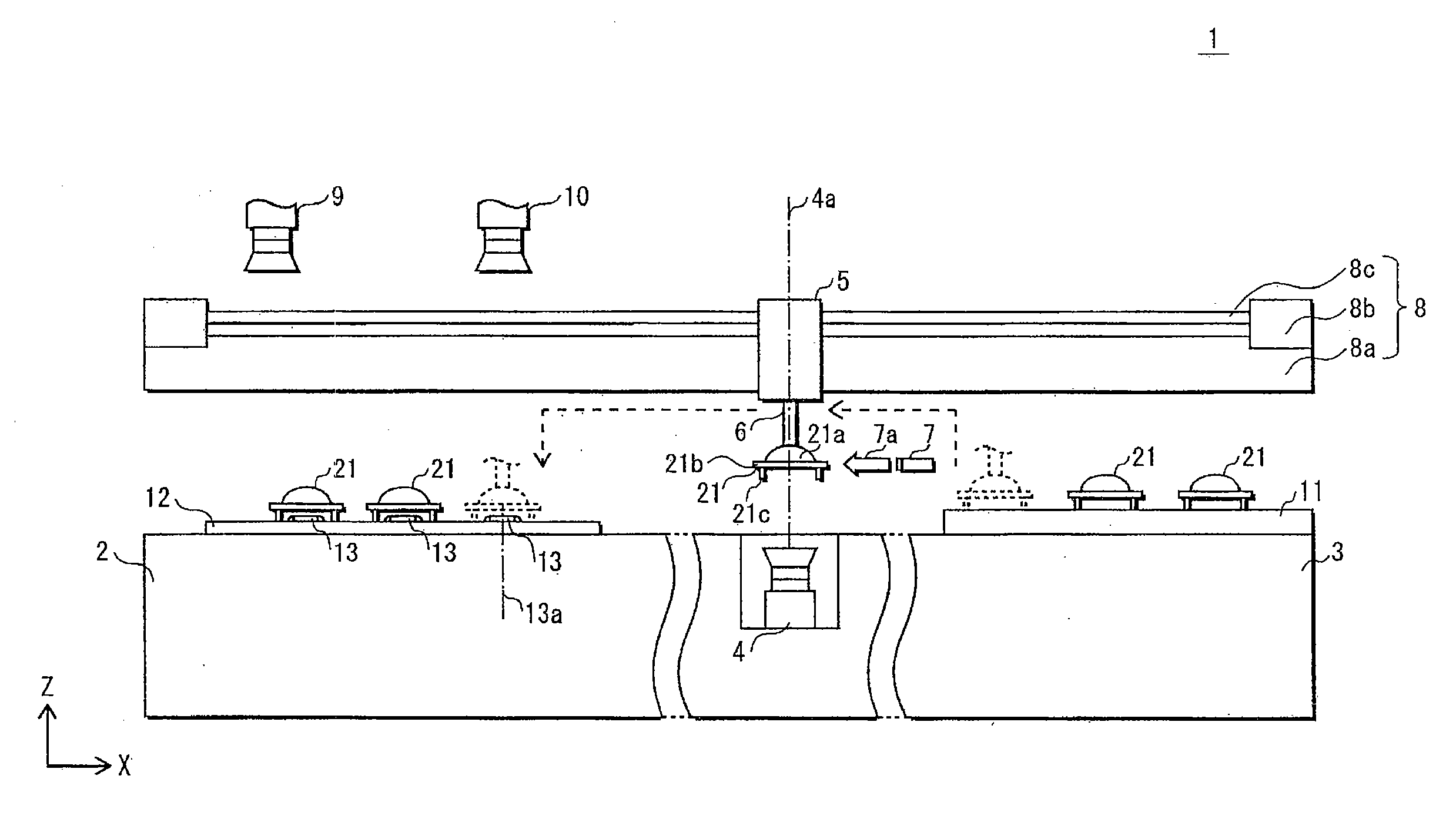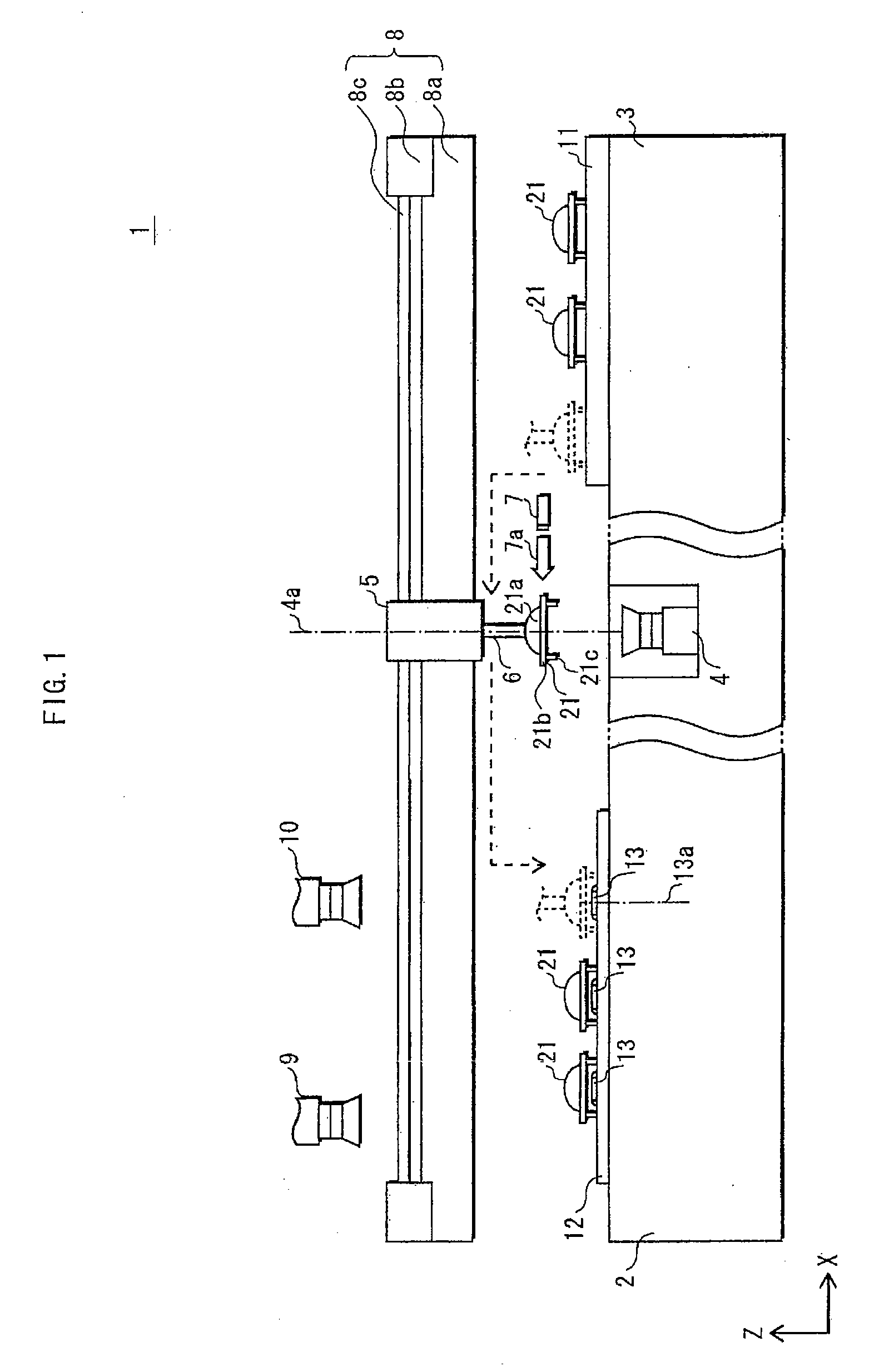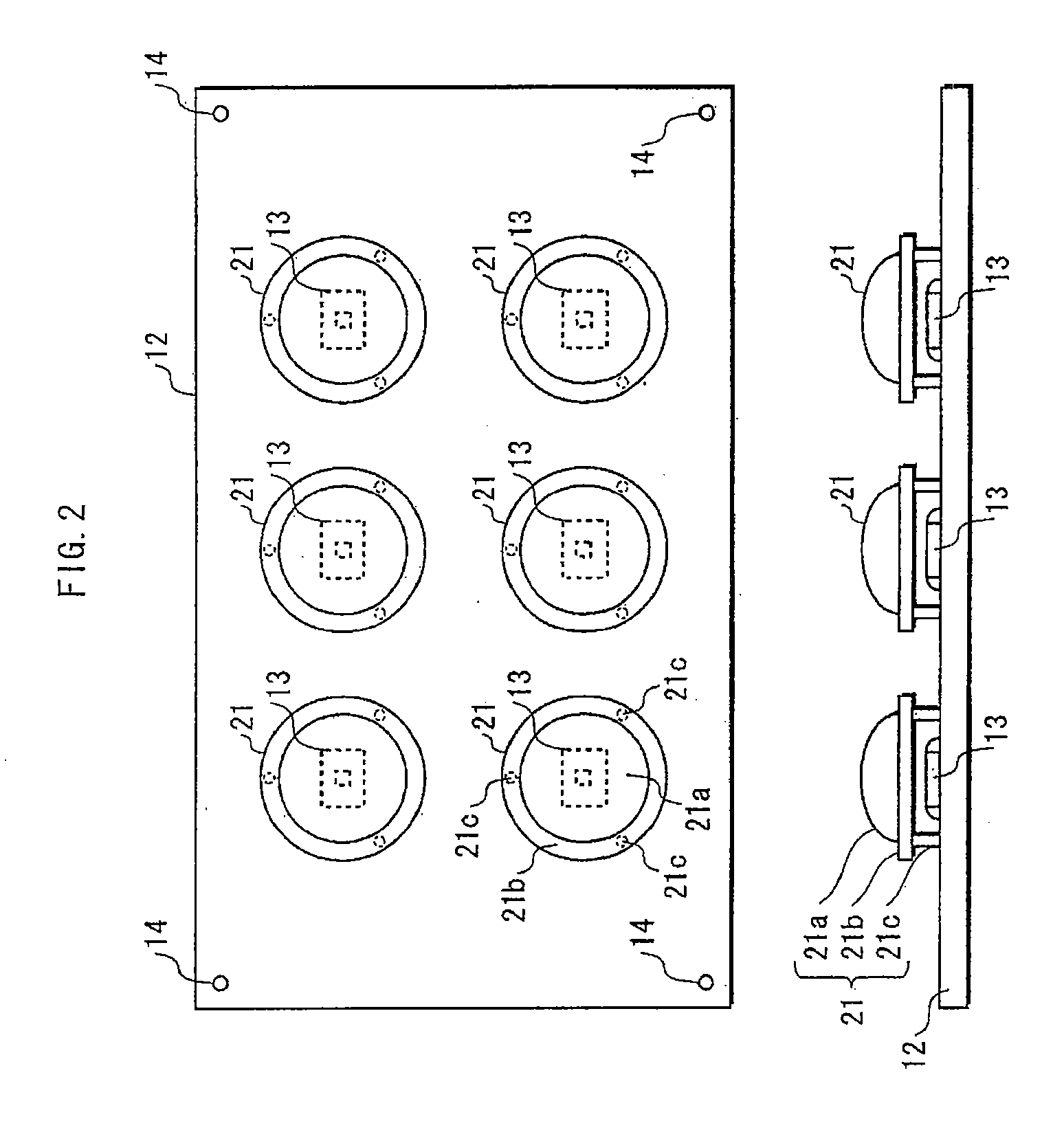Method for mounting transparent component
a technology of transparent components and components, applied in the field of mounting transparent components, can solve the problems of difficult to capture an image of an outline of the lens component, the electrode extraction method cannot be employed, and the traditional image capturing method does not allow the captured image to show
- Summary
- Abstract
- Description
- Claims
- Application Information
AI Technical Summary
Benefits of technology
Problems solved by technology
Method used
Image
Examples
modification examples
[0059]The above has described the method for mounting the transparent component based on the embodiment. However, the present invention is not limited to the embodiment, and may be implemented according to, for example, the following modification examples.
[0060](1) In the embodiment, only the leg portions 21c represent the thick parts that each have a large thickness in the vertical direction. However, the present invention is not limited to this structure. The transparent component may include other portions that also represent the thick parts, in addition to the leg portions.
[0061]FIG. 4 shows a lens component 22 including protruded portions 22d, which protrude upward from a plurality of areas in the top surface of an annulus portion 22b. As the protruded portions 22d represent the thick parts that each have a large thickness in the vertical direction, a captured image of the lens component 22 shows bright and dark spots. In the example shown in FIG. 4, the protruded portions 22d ...
PUM
 Login to View More
Login to View More Abstract
Description
Claims
Application Information
 Login to View More
Login to View More - R&D
- Intellectual Property
- Life Sciences
- Materials
- Tech Scout
- Unparalleled Data Quality
- Higher Quality Content
- 60% Fewer Hallucinations
Browse by: Latest US Patents, China's latest patents, Technical Efficacy Thesaurus, Application Domain, Technology Topic, Popular Technical Reports.
© 2025 PatSnap. All rights reserved.Legal|Privacy policy|Modern Slavery Act Transparency Statement|Sitemap|About US| Contact US: help@patsnap.com



